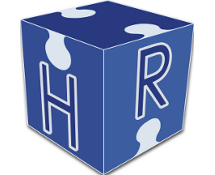What You Need To Know About OSHA Reporting Requirements
The U.S. Occupational Safety and Health Organization (OSHA) issues and enforces rules and regulations that ensures each and every worker safety and well-being. If not that isn’t enough, employers are tasked by OSHA to maintain accurate records of work-related illnesses, injuries and death. All the employers in the 50 states of U.S. must accurately observe these OSHA’s strict guidelines.
“If things seem under control, you are just not going fast enough.” — Mario Andretti
Read on below to learn more relating OSHA Reporting Requirements.
Various OSHA’s Forms and Their Respective Requirements
Let’s start with OSHA Form 300A. This form is yearly summary of all work-related illnesses and injuries. It is an actual summary of all information found in Form 300 so that it enables workers to be aware of the number of onsite (workplace) injuries that occurred in the yester year. This form (300A) must be displayed in an open place where all the employees may be able to see and read whatever is in it. Companies that reported zero injuries and illnesses during the previous year aren’t exempted from posting Form 300A.
The second form is OSHA Form 301. This form is comprised of comprehensive data that regards all the incidents logged onto Form 300. The basic information in this form includes the employer’s location and name, where and how the injury/illness occurred and employee’s personal details. The form should describe in detail the injury/illness suffered by the employee. This form must also be kept in file for five years, failure to do this result into fines and penalties.
The third form is OSHA Form 300. This is an individual incident report that displays specific details of an individual’s work-related injury or illnesses. The human resource management department in a company should manage these forms so that everything will be in order when OSHA needs the reports.
Exempted Employers From OSHA’s Regulations
For those employers who employ 10 or less employees, they are exempted from these reporting requirements. However, they still have to comply with OSHA’s rules & regulations and for those in this category who’ve been asked to keep the records, they must do so, or else they risk being penalized. Industries and individuals exempt from these regulations include firms at which only family members are the employees, workers regulated by other federal agencies and the self-employed. Also, low-hazards industries (Insurance companies, Real Estate Agencies etc.) are exempted from OSHA’s regulations.
Conditions For Compensation
Also according to OSHA, all employers hiring employees who need extra training should ensure that indeed, their employees passed the training required. For example, someone operating a crane should have passed Crane Rigging and Signal Person Qualifications.
Why is this so? Workers’ compensation Explained tells us that an employee would only get full compensation if he/she was qualified and certified to do the job that caused him/her injuries/illnesses.







No comments yet.